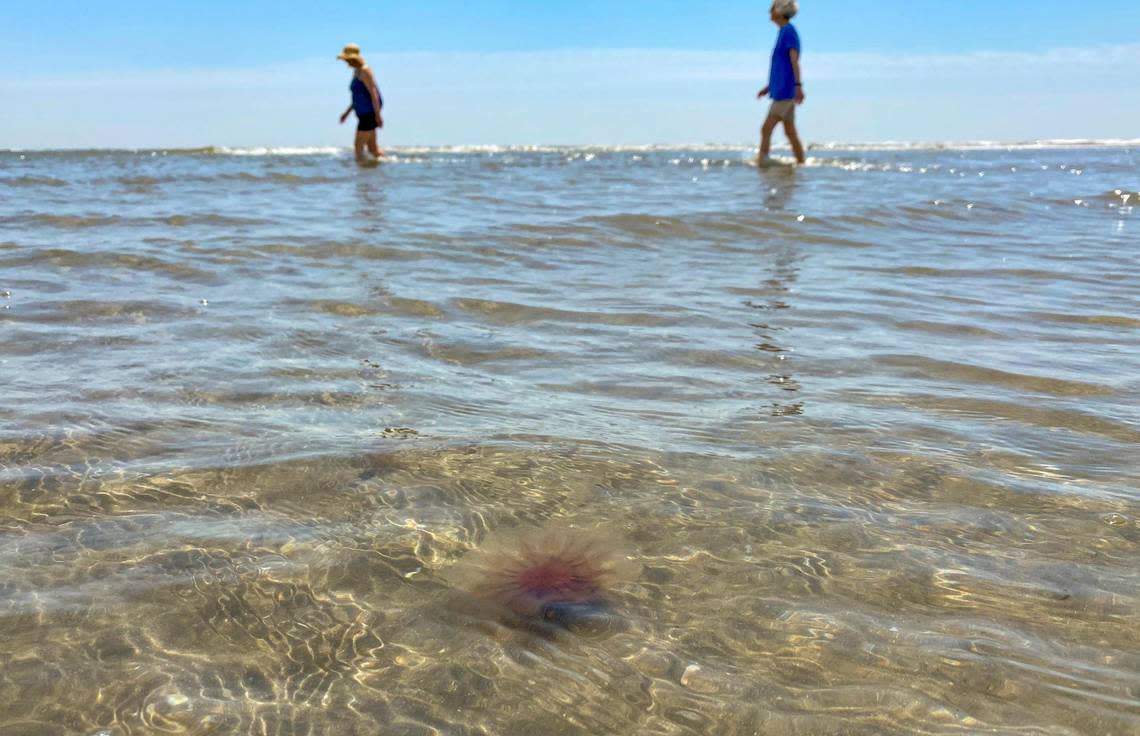Jellyfish and sea lice can be painful nuisances in Myrtle Beach but are avoidable. Here’s how
Painful sea lice and jellyfish stings can ruin the mood of a day on Myrtle Beach sands.
Recently, a Portuguese man o’ war was spotted in North Myrtle Beach. And area swimmers have been complaining on social media of itchy bumps under their swimsuits caused by sea lice.
Despite these reports, Coastal Carolina University marine science professor Juliana Harding said 2023 has been a normal year for ocean life so far.
Read on to learn how to reduce your chances of getting jellyfish stings or sea lice rashes.
Which beaches have fewer sea lice?
To have a better idea of where sea lice are, you need to pay attention to ocean conditions.
Sea lice “may be offshore, minding their own business, doing jellyfish things, whatever that is,” until wind moves them to swimmers on the beach. “If the wind holds that water on shore for a couple of days, well then it’s going to be itchy swimming,” Harding said.
Check social media and news outlets to see where people are finding them.
If the wind’s direction is different from one day to another, “then you may have something different in the water,” Harding said. This means beaches don’t become permanently infested.
How do I know if there are jellyfish in the water?
Harding recommends talking to lifeguards and other beachgoers and staying alert when swimming.
Check the lifeguard’s flags (blue means dangerous marine life) and look for sea creatures washed up on the sand. If you see one jellyfish, there will probably be more.
Harding describes the ocean as sea creatures’ “living room.” “You just have to make sure that you are being polite when you walk into their living room,” she said.

If I’m swimming and I see something that looks like a jellyfish, how do I know if it’s venomous?
If you don’t know what’s in the water, stay away. Waters around Myrtle Beach can hold a variety of sea life including harmless cannonball jellyfish and venomous Portuguese man o’ wars.
Cannonball jellyfish are the most common in South Carolina and are white and round with a brown or purple band.
Portuguese man o’ wars “sort of look like brightly decorated sandwich bags with some red and blue tint,” Harding described. They have up to 60-foot-long venomous tentacles to catch fish, which can also sting humans. Harding advised beachgoers stay far away in the water or on land.
Why do I seem to get more jellyfish stings than my fellow beachgoers?
Some people are just more sensitive to jellyfish stings than others, just like some people react more to mosquito bites. People can’t attract jellyfish, because the animals have little control on where they move and no control on where they sting.
A person’s reaction to stings can depend on the type of jellyfish or other factors, according to Harding.
“I do know from personal experience that the more you get stung by jellyfish, in some cases, the more your sensitivity will become,” Harding said.
